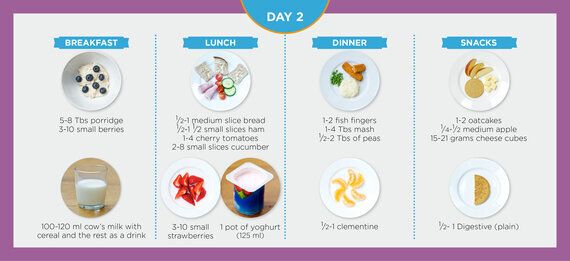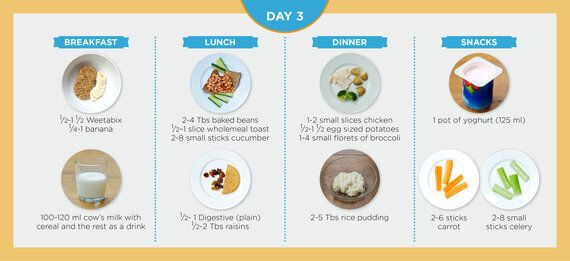While most parents are well familiar with the five food groups to include in their children's diet - fruits, vegetables, grain foods, reduced fat dairy, and protein - very often we struggle to put our knowledge into practice.
How many blueberries make up one serving of fruit?
Does a 'spoonful' of green peas count towards my child's five-a-day?
Is a cup of milk every day sufficient for my child's growing needs?
Trying to balance your child's diet with the right proportion and variety of foods seems more difficult than algebra and geometry.
A new research from the Infant & Toddler Forum confirms this, with over a third of the surveyed parents admitting to being worried that their child is not getting the right balance of foods.
Whilst a majority of parents of children aged one-to-five year old were able to correctly identify the key food groups that when combined form a balanced diet, few parents knew how often to include the food groups over the course of the day.
The result: we often end up overloading our children's plates with more broccoli stems than their little stomachs can take and mistakenly cut back on some food groups thinking they serve no nutritional purpose. For instance, nearly 65 per cent of the surveyed parents thought they should only offer their toddler starchy food; like bread, rice and pasta, once or twice a day, with only over a quarter of parents being aware that they need to be offered three-to-five times a day.
Similarly, only about half of the surveyed parents were aware that they should offer their toddler meat, fish, eggs, nuts and pulses two or three times a day despite it being the most important food group for iron, which one in eight toddlers don't get enough of in their diet.
Most parents also confess to being overly cautious of sugary foods, with some going as far as saying there should be a complete ban on giving children cakes, biscuits and sweet puddings despite it being completely acceptable for children to have these foods once a day - with the exception of confectionary and sweet drinks, including fruit juices, that need to be limited to once a week.
So how can we become MasterChefs to our children? The trick is to mix it up at every meal, with a little bit of every food group - carbs, protein, milk and dairy products, fruit and vegetables, and some fats and sugars, to give your children the best nutrition for their growth, learning and development. And since children have smaller stomachs and might not get all their energy from the three core meals, they also need nutritional snacks in between the meals to boost their energy intake.
Having a healthy attitude towards food sets up your child to a lifetime of healthy eating, and it doesn't need to wait.
"It's never too early to start promoting positive behaviour and healthy eating habits to help parents strike the right balance in their toddlers' diets," says Dr Gillian Harris, Child and Clinical psychologist and member of the ITF.
Below are sample eating plans to get you started!

(Photo credit: Infant & Toddler Forum)

(Photo credit: Infant & Toddler Forum)

(Photo credit: Infant & Toddler Forum)